 W
WWilliam Adams, known in Japanese as Miura Anjin , was an English navigator who, in 1600, was the first Englishman to reach Japan leading a five-ship expedition for a private Dutch fleet. Of the few survivors of the only ship that reached Japan, Adams and his second mate Jan Joosten were not allowed to leave the country while Jacob Quaeckernaeck and Melchior van Santvoort were permitted to go back to the Dutch Republic to invite them to trade.
 W
WAnjirō (アンジロー) or Yajirō , baptized as Paulo de Santa Fé, was the first recorded Japanese Christian, who lived in the 16th century. After committing a murder in his home domain of Satsuma in southern Kyushu, he fled to Portuguese Malacca and he sought out Saint Francis Xavier (1506–1552) and returned to Japan with him as an interpreter. Along with Xavier, Anjirō returned to Japan with two other Jesuits, two Japanese companions, and a Chinese companion who had been baptized to Catholicism to form the first Jesuit mission to Japan.
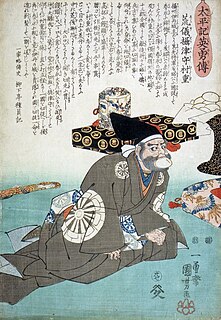 W
WAraki Murashige was a retainer of Ikeda Katsumasa, head of the powerful Ikeda clan of Settsu Province. Under Katsumasa, Murashige sided with Oda Nobunaga following Nobunaga's successful campaign to establish power in Kyoto. Murashige became a retainer of Oda Nobunaga and daimyō of Ibaraki Castle in 1573 and gained further notoriety through military exploits across Japan.
 W
WLady Aya was a Japanese noble woman from the Sengoku period. She was the half-sister of Japanese warlord Uesugi Kenshin. She was also the mother of Uesugi Kagekatsu and the first wife of Nagao Masakage Aya is best known for her role in events before and after the Siege of Otate; she lamented the Uesugi civil war for succession after Kenshin's death and refused to support either heir.
 W
WBessho Nagaharu was a Japanese daimyō of the Sengoku period. He was the eldest son of Bessho Yasuharu.
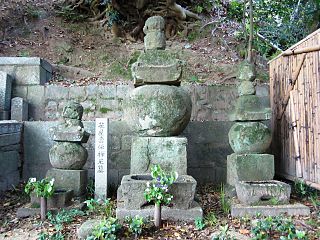 W
WDota Gozen , also known as Tsuchida Gozen, was a Japanese noblewoman and the mother of Oda Nobunaga, a major daimyō and politician of the Sengoku period regarded as the first "Great Unifier" of Japan.
 W
WFukushima Masanori was a Japanese daimyō of the late Sengoku period to early Edo period who served as lord of the Hiroshima Domain. A retainer of Toyotomi Hideyoshi, he fought in the battle of Shizugatake in 1583, and soon became known as one of Seven Spears of Shizugatake which also included Katō Kiyomasa and others.
 W
WEmperor Go-Mizunoo was the 108th Emperor of Japan, according to the traditional order of succession. Go-Mizunoo's reign spanned the years from 1611 through 1629, and was the first emperor to reign entirely during the Edo period.
 W
WHachisuka Iemasa was a Japanese daimyō of the early Edo period. Iemasa, the son of Hachisuka Koroku, was the founder of the Tokushima Domain. He served both Oda Nobunaga and Toyotomi Hideyoshi, taking part in Hideyoshi's Korean campaign. Iemasa fought on the side of Tokugawa Ieyasu at the Battle of Sekigahara, and was allowed to retain his fief for his service there.
 W
WHasekura Rokuemon Tsunenaga was a kirishitan Japanese samurai and retainer of Date Masamune, the daimyō of Sendai. He was of Japanese imperial descent with ancestral ties to Emperor Kanmu. Other names include Philip Francis Faxicura, Felipe Francisco Faxicura, and Philippus Franciscus Faxecura Rocuyemon in period European sources.
 W
WHatano Hideharu was the eldest son of Hatano Harumichi and the head of Hatano clan.
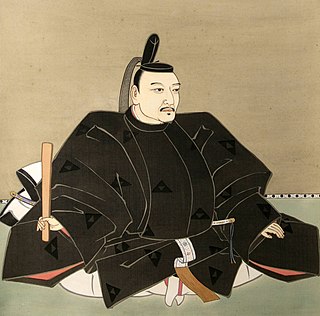 W
WHōjō Ujimasa was the fourth head of the later Hōjō clan, and daimyō of Odawara. His childhood name was Matsuchiyo-maru (松千代丸). He was a son-in-law of Takeda Shingen.
 W
WHon'ami Kōetsu was a Japanese craftsman, potter, lacquerer, and calligrapher, whose work is generally considered to have inspired the founding of the Rinpa school of painting.
 W
WHosokawa Tama (細川玉),, usually referred to as Hosokawa Garasha (細川ガラシャ), was a member of the Akechi family. aristocrat from the Sengoku period. She was the daughter of Akechi Mitsuhide, the wife of Hosokawa Tadaoki, and a Christian convert. Gracia is best known for her role in the Battle of Sekigahara, she was considered to be a political hostage to the Western army led by Ishida Mitsunari. She reneged on committing suicide (seppuku) because of their Christian faith, breaking the code of conduct imposed on women of the samurai class.
 W
WIrohahime was a Japanese noble lady and aristocrat from the Sengoku period and Edo period. She was the first daughter of Date Masamune and Megohime, as well as the wife of Matsudaira Tadateru, the sixth son of Tokugawa Ieyasu. Her Buddhist name is Tenrin'in (天麟院).
 W
WIwasa Matabei was a Japanese artist of the early Tokugawa period (1603–1867), who specialized in genre scenes of historical events and illustrations of classical Chinese and Japanese literature, as well as portraits. He was the son of Araki Murashige, a prominent daimyō of the Sengoku period who had been made to commit suicide, leaving Matabei to be raised with his mother's family name, Iwasa. Matabei's work was noted for its distinctive figures, with large heads and delicately drawn features, and he was effective both in colour and monochrome ink-wash painting, using an individual brush technique combining Tosa and Kanō elements.
 W
WJukei-ni was a Japanese noble lady who acted as the power behind the throne or de facto daimyo of the Imagawa clan during the Sengoku period. She was born in the aristocrat Nakamikado Family of Kyoto. Jukei-ni was the wife of Imagawa Ujichika and mother of Imagawa Ujiteru, Imagawa Yoshimoto and Zukei-ni. She acted as guardian and advisor for Ujichika, Ujiteru, Yoshimoto and her grandson Imagawa Ujizane. Jukei-ni is also known as ''Onna Daimyo'' and "Amamidai", once proclaimed that she would "protect Imagawa to her grave".
 W
WKanō Hideyori (狩野秀頼) His date of birth and death are unknown, however he was active in the mid-16th century, the beginning of the Momoyama period (1573–1603). He was a Japanese painter of the Kanō school in Kyoto. Not much is known about him, but he was probably either the son or grandson of Kano Motonobu
 W
WKanō Naganobu was a Japanese painter of the Kanō school.
 W
WKanō Eitoku was a Japanese painter who lived during the Azuchi–Momoyama period of Japanese history and one of the most prominent patriarchs of the Kanō school of Japanese painting.
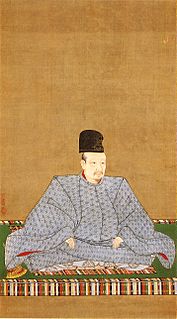 W
WKanō Takanobu was a Japanese painter of the Kanō school of painting during the Azuchi–Momoyama period (1573–1615). He was the father of Kanō Tan'yū, one of the most prominent painters of the school.
 W
WKanō Naizen was a part of the Japanese family of painters, the Kanō school. He was the middle son of school's head Kanō Eitoku, younger brother to the Kano school heir Kanō Mitsunobu, older brother to Kanō Takanobu, and adopted brother to the famed Kanō school painter Kanō Sanraku. Naizen primarily worked with his fathers and brothers in the head Kanō workshop in Kyoto to restore many imperial buildings, Buddhist temples, and Shinto shrines that were destroyed during the Kamakura period and the Genpei Wars. In 1610–15 Naizen moved to Edo, the new administration capital, at the behest of the recently ascendent Tokugawa shogunate, Tokugawa Ieyasu.
 W
WKanō Sansetsu was a Japanese painter also known as Kanō Heishiro. He was born in Hizen Province, Kyūshū, and died in Kyoto.
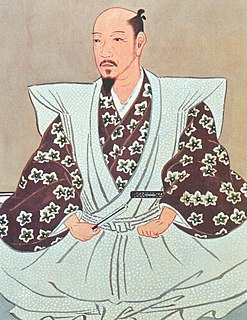 W
WKatō Kiyomasa was a Japanese daimyō of the Azuchi–Momoyama and Edo periods. His court title was Higo-no-kami. His child name was Yashamaru, and first name was Toranosuke.
 W
WKatō Tsune (加藤つね), Shōju-in (松寿院) or Otsune (お安) was a Japanese female warrior (Onna-bugeisha) from the Sengoku period. She came from the Katō clan and was the wife of the samurai warlord Okumura Nagatomi. She helped her family and the Maeda troops resist Sassa Narimasa at the Siege of Suemori Castle by providing food and medical aid to injured warriors and arming herself with a naginata to fight beside them during the conflict.
 W
WKitabatake Tomonori was the master of south Ise Province and ruled from Kitabatakeshi Jōkan. He learned swordplay from Tsukahara Bokuden so he was famous as a skilled sword man. His territory was invaded by Oda Nobunaga in 1569. He surrendered and adopted Nobunaga’s second son Oda Nobukatsu.
 W
WKomatsuhime (小松姫) was a female warrior (onna-bugeisha) during late-Sengoku period and early Edo period. Born the daughter of Honda Tadakatsu, she was adopted by Tokugawa Ieyasu, before marrying Sanada Nobuyuki. She is described as having been very beautiful, highly intelligent and skillful in fighting.
 W
WKōsa , also known as Hongan-ji Kennyo, was the 11th head of the Hongan-ji in Kyoto, and Chief Abbot of Ishiyama Hongan-ji, cathedral fortress of the Ikkō-ikki, during its siege at the end of the Sengoku period. He engineered many alliances, and organized the defenses of the cathedral to the point that most at the time considered Ishiyama Hongan-ji to be unbreachable.
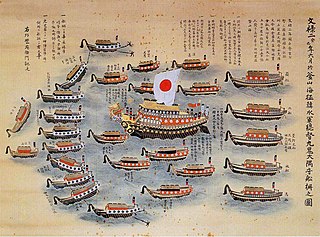 W
WKuki Yoshitaka was a naval commander during Japan's Sengoku Period, under Oda Nobunaga, and later, Toyotomi Hideyoshi. He was also the ninth headmaster of the Kuki family's school of martial arts, Kukishin-ryū and thus a very skilled warrior.
 W
WLady Hayakawa was a Japanese woman and aristocrat of the Sengoku period. Hayakawa is a common nickname for one of Daimyō Hōjō Ujiyasu's daughters, who lived in the Sengoku through early Edo periods. She is best known for marrying into the Imagawa clan as a condition for The Kōsōsun Triple Alliance, an alliance which put daughters of the Takeda, Imagawa and Hojo clans into political marriages. The formation of the alliance would later change the fate of these three powerful clans.
 W
WMaeda Matsu (前田まつ), also known as Omatsu no Kata (お松の方) (1547–1617), was a Japanese noble lady and aristocrat of the 16th century. She was the wife of Maeda Toshiie, who founded the Kaga Domain. Matsu had a reputation for intelligence; she was skilled at both literary and martial arts, she fought alongside her clan. Known for her fierce determination, Matsu was vitally important to the success of the Maeda clan, being at the forefront of many political and diplomatic issues. She was eternalized for saving the Maeda clan from Tokugawa Ieyasu in Battle of Sekigahara and Siege of Osaka.
 W
WMegohime, or Yoshihime was a Japanese noble lady and aristocrat from the Azuchi–Momoyama period to the early Edo period. She is the daughter and only child of Tamura Kiyoaki, the lord of Miharu Castle, and Okita, daughter of Sōma Akitane. She was also the wife of Date Masamune. She was also known as Lady Tamura (田村御前). After fulfilling her pravrajya, her posthumous Buddhist name was Yōtokuin (陽徳院).
 W
WMogami Yoshiaki was a daimyō of the Yamagata Domain in Dewa Province, in the late Sengoku and early Edo periods.
 W
WKita Narikatsu was a brother of the famous Mōri Motonari and son of Mōri Hiromoto.
 W
WKōdai-in (高台院), formerly known as Nene (ねね), One (おね), Nei (ねい), was an aristocrat and Buddhist nun, founder of the temple Kōdai-ji in Kyoto, Japan. She was formerly the principal samurai wife of Toyotomi Hideyoshi under the name of Toyotomi Yoshiko . When she rose in higher political status, she took the title of "Kita no mandokoro".
 W
WLady Nō , also known as Kichō (帰蝶), was the legal wife of Oda Nobunaga, a major daimyō during the Sengoku period of Japanese history. Her proper name was Kichō, but since she came from Mino Province, she is most commonly referred to as Nōhime. She was renowned for her beauty and cleverness.
 W
WNumata Jakō also known as Hosokawa Maria was a Japanese noble lady of the Sengoku period. She was the wife of Hosokawa Fujitaka and mother of Hosokawa Tadaoki. She was best known for fighting in the Siege of Tanabe and for accompanying the Hosokawa clan in the Tokugawa vanguard to clash with Shima Sakon's forces during the Sekigahara campaign.
 W
WOda Nobunaga was a Japanese daimyō and one of the leading figures of the Sengoku period. He is regarded as the first "Great Unifier" of Japan.
 W
WOeyo (於江与), Gō (江), Ogō (小督) or Satoko (達子) : 1573 – September 15, 1626) was a prominently-placed female figure in late-Sengoku period. She was daughter of Oichi and the sister of Yodo-dono and Ohatsu. When she rose in higher political status during the Tokugawa shogunate, she took the title of "Ōmidaidokoro". Following the fall of the Council of Five Elders, Oeyo and her sisters were key figures in maintaining a diplomatic relationship between the two most powerful clans of their time, Toyotomi and Tokugawa. Due to her great contributions to politics at the beginning of the Edo period she was posthumously inducted into the Junior First Rank of the Imperial Court, the second highest honor that could be conferred by the Emperor of Japan.
 W
WOichi was a female historical figure in the late Sengoku period. She is known primarily as the mother of three daughters who became prominent figures in their own right – Yodo-dono, Ohatsu and Oeyo. Oichi was the younger sister of Oda Nobunaga; and she was the sister-in-law of Nōhime, the daughter of Saitō Dōsan. She was descended from the Taira and Fujiwara clans.
 W
WŌtomo-Nata Jezebel or Lady Nata was a Japanese noble woman from the Sengoku period. Daughter of Nata Akimoto, she was a high priestess of Usa Jingū. She was the first wife of Christian daimyo Ōtomo Sōrin. She actively resisted against the Jesuit mission in Japan and the spread of Christianity in Kyushu.
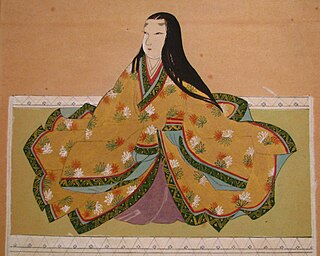 W
WLady Saigō, also known as Oai, was the first consort and trusted confidante of Tokugawa Ieyasu, the samurai lord who unified Japan at the end of the sixteenth century and then ruled as shōgun. She was also the mother of the second Tokugawa shōgun, Tokugawa Hidetada. Her contributions were considered so significant that she was posthumously inducted to the Senior First Rank of the Imperial Court, the highest honor that could be conferred by the Emperor of Japan.
 W
WSanada Yukimura , actual name: Sanada Nobushige , was a Japanese samurai warrior of the Sengoku period. He was especially known as the leading general on the defending side of the Siege of Osaka.
 W
WShimazu Toyohisa , son of Shimazu Iehisa and nephew of Shimazu Yoshihiro, was a Japanese samurai who was a member of the Shimazu clan. He was also the castle lord in command of Sadowara Castle.
 W
WLady Shirai was a Japanese noble lady and aristocrat from the Sengoku period. She was born to the Nagao clan in Shirai, who were head retainers to the Uesugi clan in Kantō. She was the wife of Narita Nagayasu, the lord of Oshi castle in Musashi. She is also thought to be either the daughter or granddaughter of Nagao Kageharu. Lady Shirai was a retainer of the Ashikaga Shogunate, fought and died during the Incident of Kyoto in 1565, when Ashikaga Yoshiteru was killed.
 W
WSuzuki Magoichi (鈴木孫一、鈴木孫市), better known as Saiga Magoichi or Saika Magoichi (雑賀孫一、雑賀孫市), was the name given to the leader of the Saika Ikki. He is famous for arming his troops with arquebuses and donning the yatagarasu as his family crest.
 W
WTachibana Ginchiyo was head of the Japanese Tachibana clan and onna-bugeisha during the Sengoku period. She was the daughter of Tachibana Dōsetsu, a powerful retainer of the Ōtomo clan. Because Dosetsu had no sons, he requested that Ginchiyo be made family head.
 W
WJusto Takayama Ukon (ジュスト高山右近), born Takayama Hikogorō (高山彦五郎) and also known as Dom Justo Takayama was a Japanese Catholic Kirishitan daimyō and samurai who lived during the Sengoku period that witnessed anti-religious sentiment. Takayama had been baptized into the faith in 1564 when he was twelve, though over time neglected his faith due to his actions as a samurai. He would eventually rekindle his faith just after his coming-of-age ritual near the age of 20. He abandoned his status to devote himself to his faith and was exiled to Manila, where he lived a life of holiness until his death two months later.
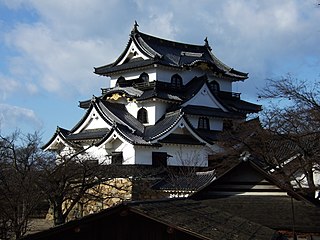 W
WTobai-in was a Japanese woman of the late Azuchi–Momoyama through early Edo periods. Tobai-in was known for her beauty and intelligence. She was the daughter of Matsudaira Yasuchika. Her brother was Matsudaira Yasushige. In 1582 she was adopted by Tokugawa Ieyasu. January 11, 1584, Ieyasu gave her in marriage to Ii Naomasa, one of the four Shitennō of the Tokugawa. Their son, Ii Naokatsu was the first Lord of Annaka Domain in Kōzuke Province. Her older daughter married Matsudaira Tadayoshi, son of Tokugawa Ieyasu and brother of the shōgun Tokugawa Hidetada. Her younger daughter married Date Hidemune, Date Masamune's first son. In 1602, when Naomasa died due to injuries from Sekigahara, she became a nun. However her son was only 12 years old, so she continued to support her son as daimyō of the clan until he was of age. Tobai-in had a memorial built for her husband in Shiga Prefecture. After her death in 1639, she was buried in Hikone Castle, in the Annaka Domain. She was also known as Seizen-in (清泉院) and Hana (花).
 W
WTokugawa Hidetada was the second shōgun of the Tokugawa dynasty, who ruled from 1605 until his abdication in 1623. He was the third son of Tokugawa Ieyasu, the first shōgun of the Tokugawa shogunate.
 W
WTokugawa Ieyasu was the founder and first shōgun of the Tokugawa shogunate of Japan, which ruled Japan from 1603 until the Meiji Restoration in 1868. He was one of the three "Great Unifiers" of Japan, along with his former lord Oda Nobunaga and Toyotomi Hideyoshi.
 W
WToyotomi Hideyoshi was a Japanese shogun and politician of the late Sengoku period regarded as the second "Great Unifier" of Japan.
 W
WYamauchi Chiyo (山内千代) or Kenshōin was a Japanese noble lady from the Sengoku period to the early of the Edo period. Known in history for her dedication and devotion to her family, she was vitally important to the success of the Yamauchi clan, a samurai clan under the leadership of her husband, Yamauchi Kazutoyo. It is said that she was responsible for stabilizing the predominance of the Yamauchi clan, and the formation of the Tosa domain.
 W
WYodo-dono (淀殿) or Yodogimi (淀君) was a prominently placed figure in late-Sengoku period. She was the daughter of Oichi and sister of Ohatsu and Oeyo. She was a concubine and second wife of Toyotomi Hideyoshi, who was then the most powerful man in Japan. She also became the mother of his son and successor, Hideyori. Her time period being that of large turmoil and overhaul, Yodo-dono had an interest toward both politics and administration. She actively acted in the restoration of the Toyotomi clan after the fall of the Council of Five Elders, as Hideyori's guardian. Alongside her son, Yodo-dono led the last anti-Tokugawa shogunate resistance in the Siege of Osaka.
 W
WYuki no Kata (ゆきの方) or Oyuki (おゆき), was a Japanese female warrior (Onna-bugeisha) from the Sengoku period. She was the wife of Tomita Nobutaka, an officer of Toyotomi Hideyoshi. Her birth and death are not recorded. Portrayed in current records as beautiful and highly skilled warrior, she defended the Anōtsu castle in the Battle of Sekigahara.